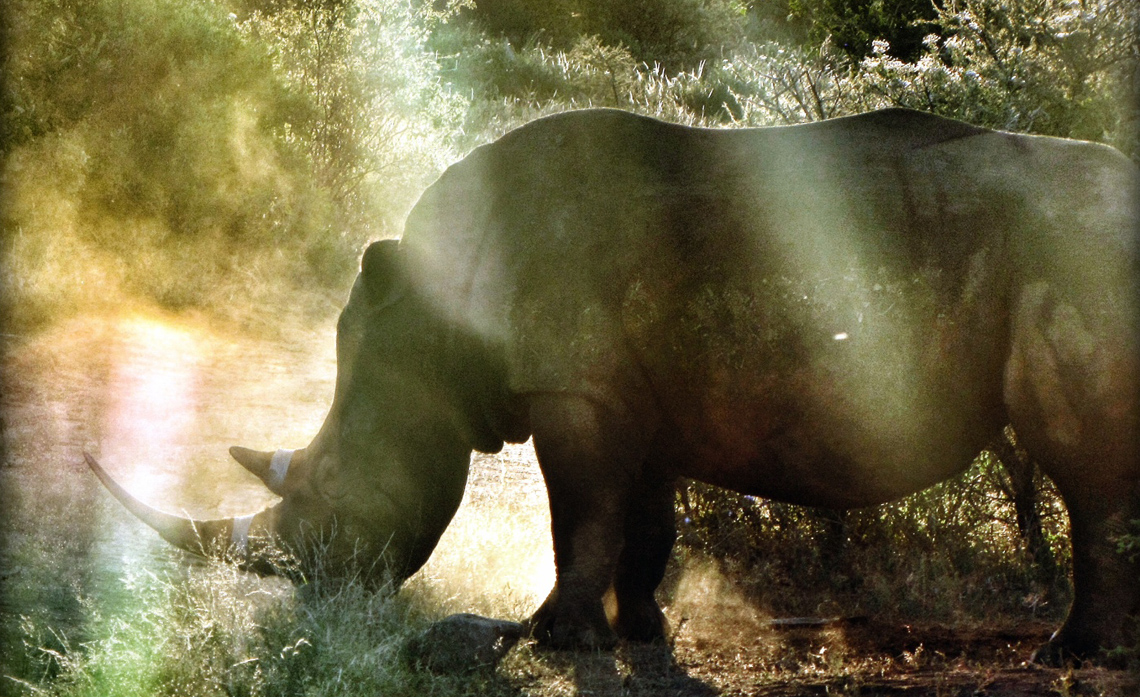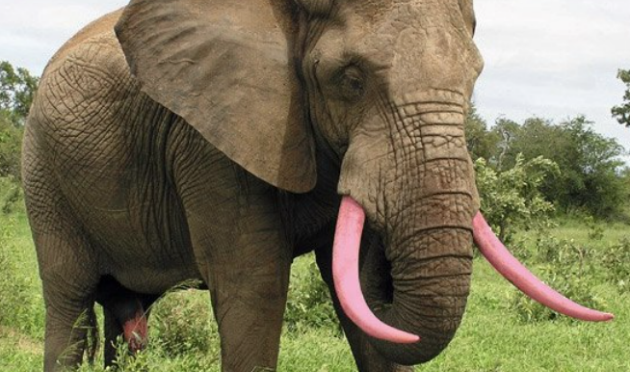Recently, pictures of pink elephant tusks have taken social media by storm. Originally published at Yahoo Canada, Kelly Putter, spoke out on the Daily Brew about an out of the box solution, that some conservationists are using in order to stop the poaching for ivory in elephants and rhinos. While the photos themselves are photo shopped portraying elephants painted with pink tusks, the representation of dying tusks and horns are a strategy that is gaining attention. 
The team at The Rhino Rescue Project in Johannesburg, South Africa have taken matters into their own hands when it comes to the illegal slaughter of these animals; creating an unconventional way to solve this out-of-control problem with poaching.
In order to devalue the horn, they use a controversial method of darting the rhinos from the air, effectively immobilizing them in order to send in a ground crew. To reduce stress on the animal, it is blindfolded and its ears are plugged while the tusk is then treated by infusing it with an animal friendly compound that is made up of ectoparasiticides and indelible dye. This dye contaminates the horn, rendering it useless for both medicinal purposes and ornamental use. The team also protects the animal by adding additional security measures like microchips, tracking technology and DNA sampling and storage.
Since gaining widespread media attention, conservationist at the International Conservation Fund of Canada, a charity that focuses on conversation work at a global level have mocked the idea of darting animals stating that ” The idea is impractical to impossible on a field-level scale because of the sheer logistics and costs to implement” ” Darting and applying dye to elephants would involve a huge costs and stress and risk to the elephants And even if achievable on a small, enclosed population, poaching pressure would just be diverted elsewhere” Ann Lambert.
Yet, these remarks aren’t diverting The Rhino Rescue Project. There mission is to offer a sustainable and cost-effective way to protect the animals in South Africa, as well as in other countries. By infusing the horn with this dye, they hope to trigger health anxieties by inflicting fear into those consuming them for medicinal use.
“We believe that the only way to save the rhino, is to devalue their horns from the consumer perspective. Demand in Vietnam and China is growing exponentially and without effective demand reduction there will be no way protect the rhino population going into rapid decline from 2016”.
Dr. Colman O’Ciodain of the World Wildlife Fund states that the WWF doesn’t endorse horn infusions due to its impracticability. “The reason we didn’t endorse this method is because simply in order to do that you have to dart and anesthetize the rhino”. ” Most of the poaching is happening in Kruger National Park and
that’s the size of Wales and it’s just not practical. Not to mention the fact that in a matter of time they would have babies and you’d have to do it again”
While the WWF has taken a backseat role in effectively protecting these animals from slaughter, preferring to fight the illegal trade of ivory by “stepping up enforcement on its sale” more than 1200 rhinos were lost to poaching in 2014, a 9000 percent increase from the 13 rhinos lost in 2007. Elephant herds have shrunk 50 percent since 1979 and it is estimated that 35,000 elephants are killed each year in Africa.
To support the rhino rescue project, please visit their website.
by LJ Vanier

